A star player in many processes and systems, heat exchangers are critical in achieving desired temperature regulation. Understanding heat exchangers, with their various types and applications where they excel, is necessary for those working in fields such as engineering, manufacturing, and energy. This article takes a closer look and provides valuable insight into the interesting world of heat exchangers.
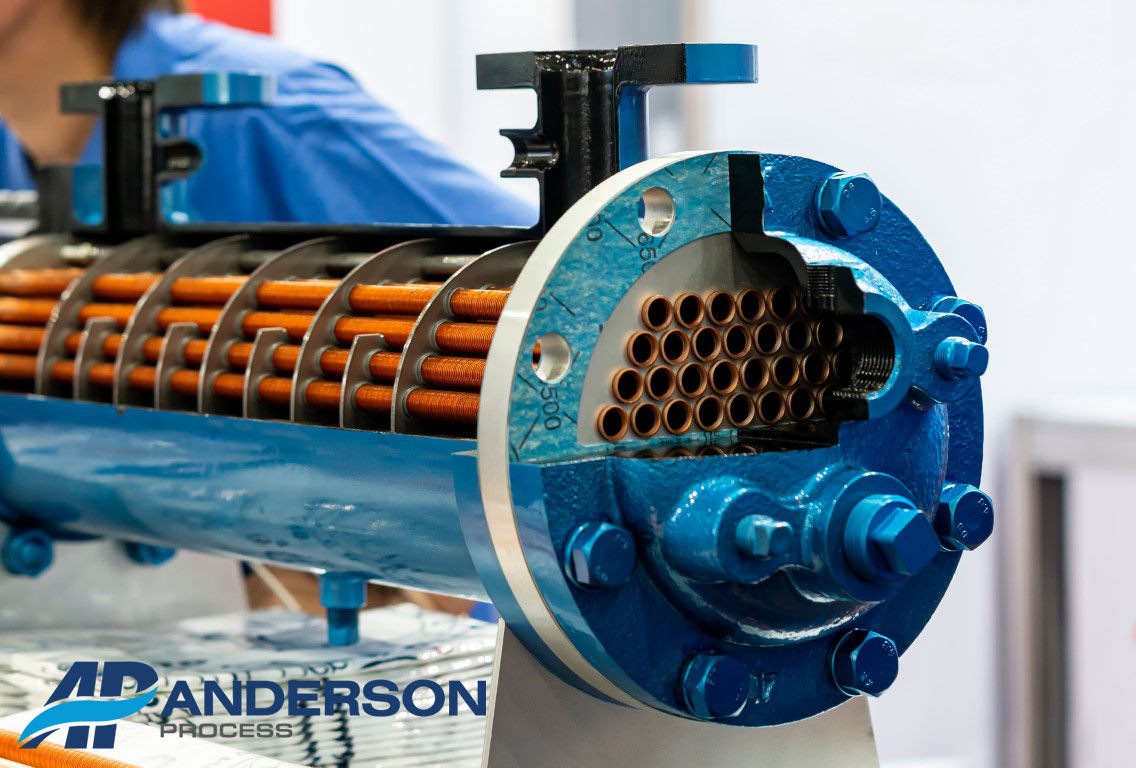
What is a Heat Exchanger?
A heat exchanger is a device that enables heat energy transfer between two or more working fluids, including liquids, vapors, and gasses. Heat transfer can occur in a single phase or across a phase change (for example liquid to vapor). The fluids are separated to prevent mixing or encountering one another by a solid separator. Heat exchangers are prominent in the food and beverage and pharmaceutical industries to regulate temperature during processing. They are also essential devices that focus on process efficiency used for important applications such as refrigeration, HVAC, power generation, etc.
Popular Types of Heat Exchangers
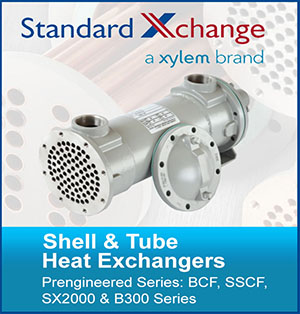
Shell & Tube Heat Exchanger
Employing the concept of thermal conduction, shell & tube heat exchangers work by having separate tubes in close proximity to one another in a cylindrical shell, so they can exchange “heat.” The tubes are often constructed using a conductive metal such as aluminum, steel, etc. to accelerate heat transfer. In order for thermal conductivity to take place, A fluid is transferred in the tubes from the inlet to the outlet side of the pump. While this action occurs, the cylindrical shell passes a separate fluid over these tubes to heat or cool the fluid in the tubes down. The number of tubes determines the amount of surface area exposed to the shell fluid, which in turn determines how much heat is transferred. Shell & Tube heat exchangers are the preferred heat exchanger of choice for many industry professionals due to their compact size, excellent heat transfer ability, and ease of maintenance.
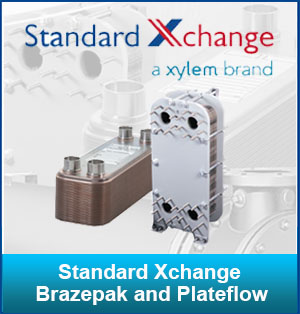
Plate Heat Exchangers
A plate heat exchanger is a type of compact heat exchanger that uses thin corrugated metal plates welded or brazed together in a stack to transfer heat between two liquids. Plates are commonly made of stainless steel, but it is not unusual for them to be made of copper and nickel. Plate heat exchangers work with the two fluids flowing through alternate channels in the plate stack. The hot fluid transfers its heat to the cold fluid through the thin metal plates. The configuration in the plates enhances heat transfer ability because of turbulence. Plate heat exchangers, more specifically brazed plate heat exchangers, are solid units due to the brazing process and can withstand high pressures and temperatures. Several applications utilize plate heat exchangers, including but not limited to heating, ventilation, air conditioning, (HVAC) systems, refrigeration systems, and industrial processes. There are many advantages of plate heat exchangers, such as high transfer heat coefficients and affordability for budget-conscious customers.
Air Cooled Heat Exchanger
Typically used in applications where water or no other cooling liquid is available, air-cooled heat exchangers reject heat from process fluids and expel them into the air. Air-cooled heat exchangers work by having process fluids flow through the tubes. An air stream created by a built-in fan passes over those tubes pushing the excess process heat away. Air-cooled heat exchangers work best in applications to cool oil or other fluids when size, efficiency, and quiet operation are desirable. Common applications for air-to-liquid applications include but are not limited to, glycol coolers, engine radiators, jacket water coolers, and closed-loop systems.
Double Pipe Heat Exchangers
Double pipe heat exchangers, also commonly known as concentric tube heat exchangers, work by transferring heat between two fluids in separate pipes. One pipe is located inside the other pipe and fluid flows in opposite directions. The hot fluid flows through the pipe and the cold fluid flows through the space between the pipes. The heat from the hot fluid is transferred through the walls of the inner pipe to the cold fluid. The efficiency of the heat transferred depends on several circumstances including the temperature difference between the two fluids, fluid properties, and pipe material. Double pipe heat exchangers have a simplistic design and are a terrific choice for small-scale applications such as pilot plants and laboratory equipment. They are often used for corrosive and hazardous applications as well since there is no risk of fluids being mixed. The downside of double pipe heat exchangers is a low heat transfer rate, but they are still cost-effective, reliable options.
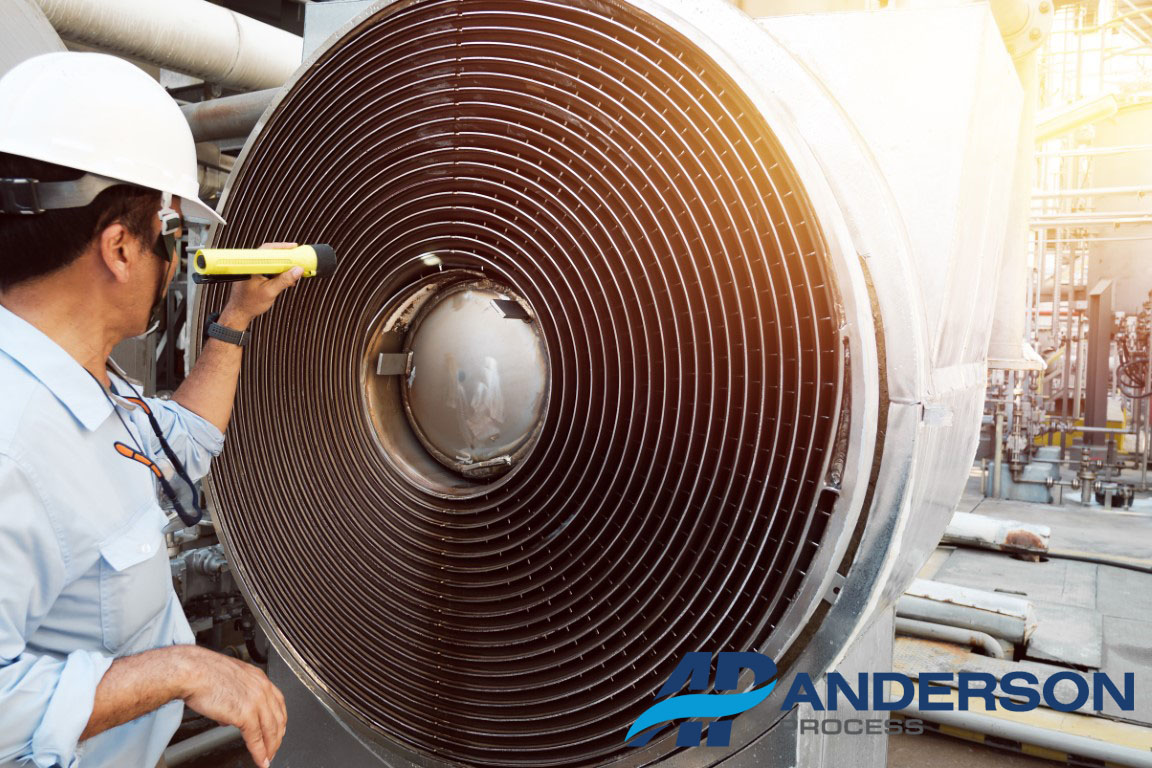
Spiral Heat Exchanger
Spiral heat exchangers have a simplistic design, consisting of two spiral channels with spiral-shaped baffles wound around a central core. The two channels typically containing hot and cold liquids are separated by a thin wall or series of walls. The heat transfer occurs through the channels in a counter-current or co-current flow. The spiral shape promotes a high turbulent flow, which enhances heat transfer efficiency. The thin walls also help accelerate heat transfer by providing a large surface area for heat exchange. Spiral heat exchangers are commonly used for oil refining, pulp and paper, minerals and mining, petrochemicals, and wastewater treatment. They are also prevalent in HVAC systems, chemical processing, and in the food and beverage industry. Spiral heat exchangers are usually compact units with high thermal efficiency.
Photo: Engineer Inspecting Spiral Heat Exchanger
Common Applications
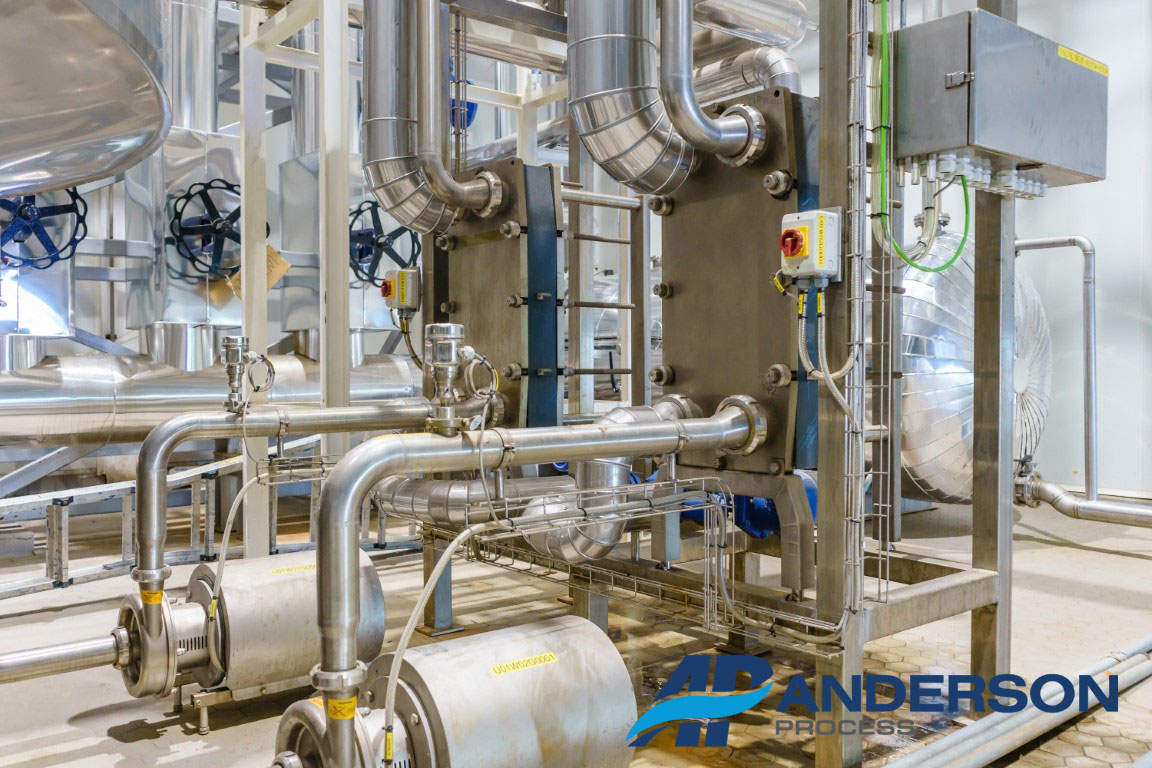
Process Industries
Heat exchangers are commonly used for a variety of purposes in process industries where heat energy is needed to transfer from one fluid to another. Some industries that utilize heat exchangers include chemical, pharmaceutical, and food and beverage. Heat exchangers are used to heat or cool process fluids used in the manufacturing process. For example, in a chemical plant, heat exchangers can be used to heat up reactants before they enter a reactor vessel. Heat exchangers help recover waste heat and use that heat to warm another process fluid. This action helps improve energy efficiency and reduces operating costs. Heat exchangers can be used to cool process equipment as well. Equipment such as pumps, compressors, and turbines are cooled by circulating cooling water. Heat exchangers can be used to evaporate or concentrate solutions by heating them up and causing water to evaporate. This attribute can be useful in the production of various chemicals, like pharmaceuticals and fertilizers.
Photo: Plate Heat Exchanger System Cooling Industrial Pump
HVAC Systems
HVAC systems help control the temperature and air quality of indoor environments and heat exchangers play a crucial role in the process. Air-to-air heat exchangers are used to transfer heat between two streams of air. Commonly used in ventilation systems, air-to-air heat exchangers recover heat from exhaust air and preheat incoming air. This process improves energy efficiency and reduces heating costs. Water-to-air heat exchangers are instrumental in HVAC systems to transfer heat between a water stream and a cold air stream. They are prominently used in forced-air heating systems, where hot water is circulated through pipes in the walls or floors to heat the air. Water-to-water heat exchangers transfer heat between two streams of water at different temperatures. They are utilized primarily in hydronic heating systems, where hot water is circulated through radiators or in-floor heating pipes in order to heat a building. Last, but not least ground-source heat exchangers transfer heat between a building’s HVAC system and the ground. They are commonly used in geothermal heating and cooling systems.
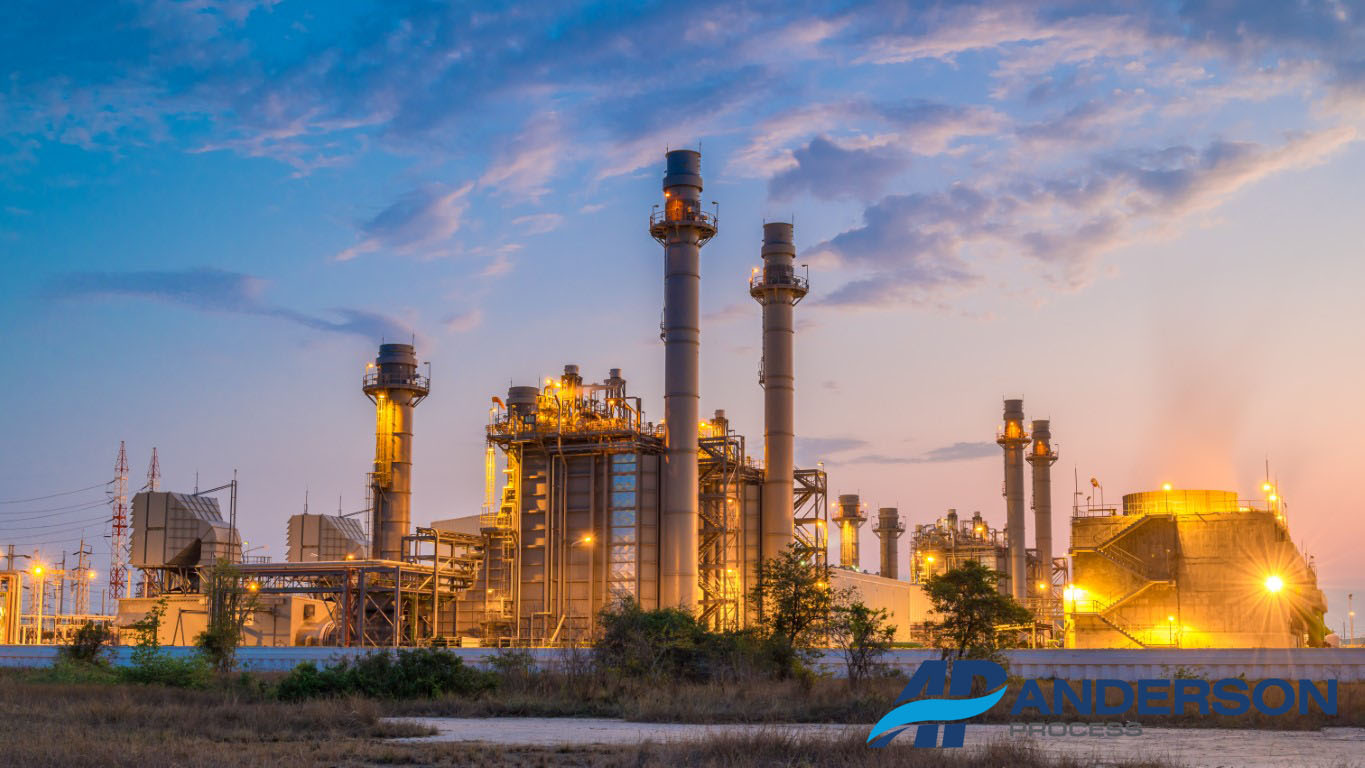
Power Generation
Power generation would not be as efficient as it is today without the aid of heat exchangers. Heat exchangers transfer the heat from the combustion of fuel or water. The combustion of fuel or water creates steam, which drives turbines to generate electricity. This process is commonly known as the Rankine cycle or steam cycle. In boiler feedwater heaters, heat exchangers preheat the water that enters the boiler reducing the amount of fuel needed to heat the water to its boiling point. Heat exchangers are used in condensers to transfer heat from the steam exiting the turbine to a cooling medium, such as water or air, which condenses the steam back into water. Water is then pumped back to the boiler to be heated again creating an efficient closed-loop system. Steam surface condensers use heat exchangers to condense steam back into water by passing it over a series of tubes cooled by water. Intercoolers and aftercoolers use heat exchangers in gas turbines to cool compressed air, which reduces its volume and increases density improving the compressor or turbines efficiency. Saving resources and time, heat exchangers are MVP players in power generation.
Automotive Industry
In the automotive industry, heat exchangers play a vital role in the automobile’s cooling system. Heat exchangers are used for a variety of roles including engine cooling, transmission cooling, and air conditioning. For engine cooling, the heat exchanger used is typically a radiator that dissipates the heat generated by the engine. The engine coolant flows through the radiator and air passes over the radiator fins, which cools the coolant and removes the heat from the engine. Heat exchangers are used in the transmission cooling system to dissipate the heat generated by the transmission. Keeping the transmission fluid cool is vital to the health and longevity of the transmission system. In the air conditioning system, heat exchangers are used to transfer heat from the cabin air to the refrigerant, which is then transferred to the outside air. This process is important in keeping the cabin of the automobile cool and removing heat from the car’s interior. Heat exchangers are essential to regulating the temperature of various fluids, preventing overheating, and contributing to the efficiency of the engine and other systems. If heat exchangers weren’t used in automobiles the cooling systems would be much less effective and more prone to mechanical failure.
Refrigeration and Air Conditioning
Heat exchangers are used in refrigeration and air conditioning systems to help transfer heat from one fluid to another. There are two common ways heat exchangers are used in refrigeration and air conditioning, through an evaporator and condenser. In the refrigeration cycle, the evaporator is responsible for absorbing heat from the space being cooled. This feat is accomplished by a refrigerant passing through the evaporator, which is usually a coil of tubing that is in contact with the air being cooled. When the refrigerant passes through the evaporator it evaporates, absorbing heat from the air and cooling it. The evaporator, which is essentially a heat exchanger in this process, transfers heat from the air to the refrigerant. After the refrigerant has absorbed the heat from the evaporator, it is compressed and pumped into the condenser. The condenser then releases the heat to the outside air. The condenser, usually located outside the building, consists of a coil of tubing and a fan. When the refrigerant passes through the condenser it gives up heat to the outside air, and the fan blows over the coil to cool it down. The condenser is also a heat exchanger that transfers heat from the refrigerant to the outside air. The transfer of heat between the refrigerant and the air or other fluid used to transfer heat contribute to a refrigeration and air conditioning system that can maintain a desired temperature.
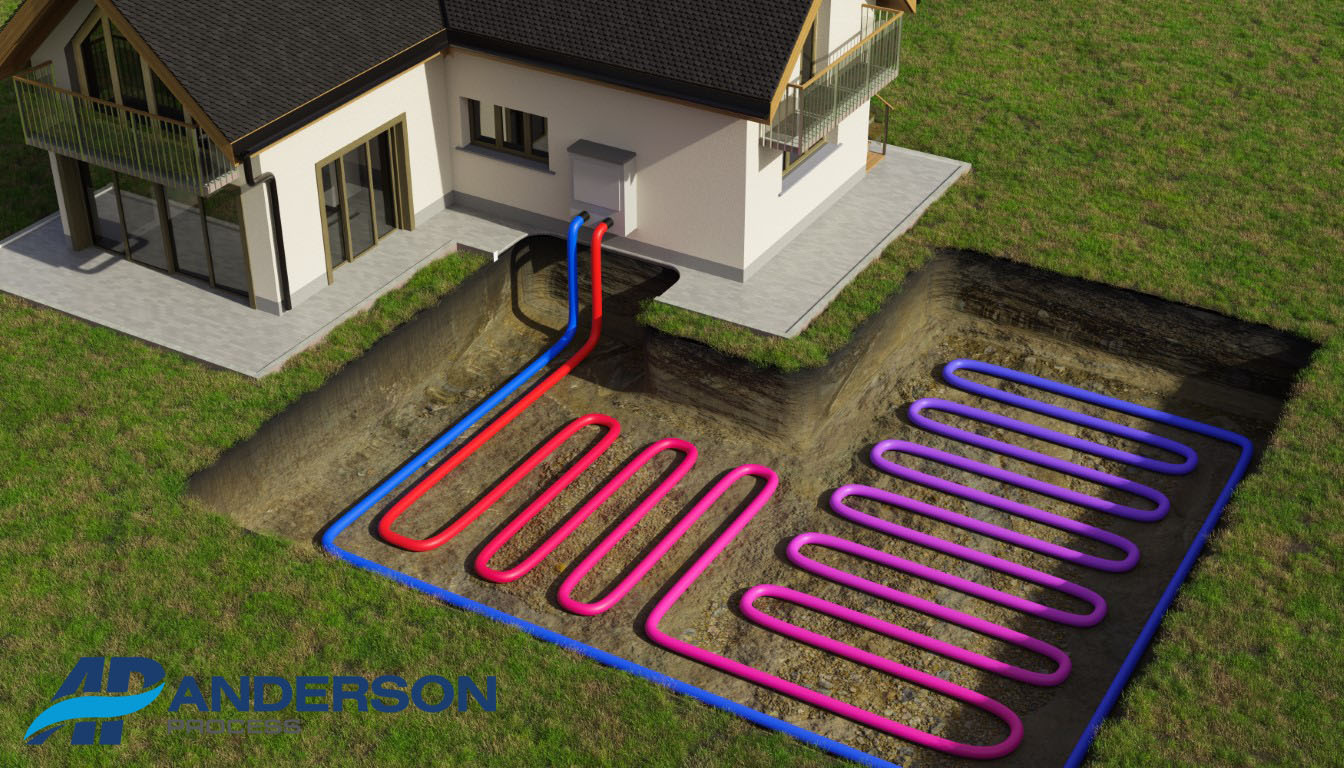
Renewable Energy Applications
Heat exchangers are critical for increased efficiency and reduced emissions in renewable energy applications. Geothermal energy systems use heat exchangers to transfer heat from the ground to a building or a heat pump. For example, in a closed-loop system, a heat exchanger is buried in the ground and a fluid is circulated through it to absorb heat from the earth. The heated fluid is then transferred to a heat pump, which uses it to heat a building or produce hot water. Heat exchangers are used in solar thermal systems to transfer heat from a solar collector to a storage tank. A heat exchanger in a common solar thermal system is used to transfer heat from a solar collector to a storage tank filled with water. The heated water is used for domestic hot water and space heating. Biomass heating systems use heat exchangers to transfer heat from a biomass boiler to a distribution system, such as a radiator or underfloor heating system. The heat exchanger improves efficiency and reduces emissions, allowing the boiler to operate at high temperatures. Also prominently used in heat recovery systems, heat exchangers are used to recover heat from industrial processes or exhaust streams. Typically heat is wasted in industrial processes. Heat exchangers recover what would be wasted heat and use it for other applications, such as space or water heating.
Photo: Heat Pump System Heating The Home with Geothermal Energy
Domestic Applications
Heat exchangers are used for several domestic applications that affect our everyday lives. Besides HVAC systems, heat exchangers are used in water heaters, swimming pool heaters and solar water heaters. Tankless water heaters use heat exchangers to transfer heat from a heat source to the water as it flows through the system. A coil of copper tubing that the water flows through is typically the heat exchanger in a tankless water heater. The heat source is a gas burner or electric heating element. Heat exchangers are used in swimming pool heaters to transfer heat from a heat source, such as a gas or electric heater, to the water in the pool. The heat exchanger in a pool is usually a set of tubes that the water flows through. The heated liquid flows through a separate set of tubes transferring heat to the pool water. Solar water heaters use heat exchangers to transfer heat from the sun to the water that is used at home. Typically, in solar water heating systems, a solar collector absorbs heat from the sun and transfers it to a fluid that flows through a heat exchanger. The heat is then transferred to the water used at home.
Heat exchangers are an essential component of many industrial processes that involve heating and cooling. These devices are proactive in improving energy efficiency and reducing costs. With proper design, installation and care, heat exchangers can provide reliable heat transfer for a wide range of applications from power generation and chemical processing to HVAC and refrigeration.
